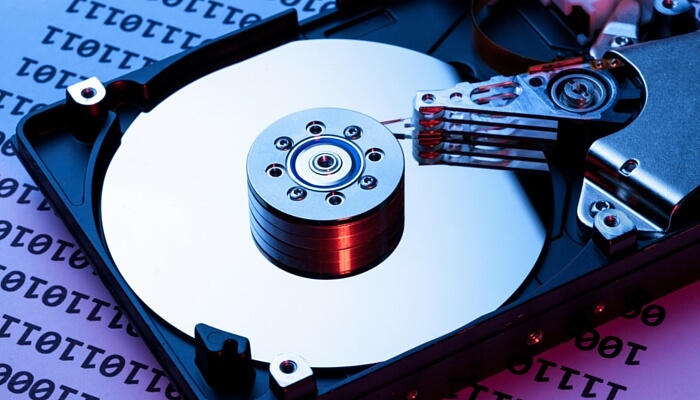If you’re selling your hard drive, or perhaps just binning it, you need to make sure all of your data is completely wiped and inaccessible. However, not everyone actually erases their drive.
The chances are, your computer or laptop’s hard disk drive has contained some sensitive information at some point in its life. This can be anything from passwords, bank details and statements to contacts and scans of ID. You might think that when you delete this data, it’s gone forever, as long as you empty the Recycle Bin. But this is wrong. When you delete a file, it isn’t deleted in the way you might imagine. All data on an HDD is stored as a series of 0s and 1s. Deleting a file simply deletes the master file table reference, which tells the operating system where the file was located. In essence, all you’ve done is delete the pointer or map to the file, rather than the file itself. What this does do, though, is tell the operating system that this space is free to write data to. So if you’re looking to recover some data using file recovery software, you may still be successful even if you have deleted the data and emptied it from your Recycle Bin, provided your operating system hasn’t overwritten the portion of the drive yet.
But data lingering on your hard drive if you’re selling, giving away or throwing it out is not something you want. If you’re throwing your hard drive out, the best way to ensure nobody will be able to access your data is to physically destroy it. Destroying the platter (we’d recommend a screwdriver and a hammer) will render any data recovery attempts futile. In our data recovery lab, we have a machine that physically destroys hard drives that clients no longer want, which punches holes in the drives’ platters.
However, many people might want to try and get some money for their hard drive, or perhaps give it away to someone in need. In these circumstances, a process called data sanitisation, or disk wiping, needs to be undertaken. Disk wiping is a non-destructive way of permanently removing data from a hard disk drive, rendering it unrecoverable. There are two programs we’d recommend for this – Eraser, and Darik’s Boot and Nuke (DBAN). The patterns used by Eraser are used by government agencies to wipe data and render it unrecoverable. Eraser is easy to use, and once you’ve selected a location, it will overwrite it with random data. DBAN, a well-known and respective data wiping software, runs from a bootable disk, and can automatically erase all found partitions if you wish, since it doesn’t run on the OS.
